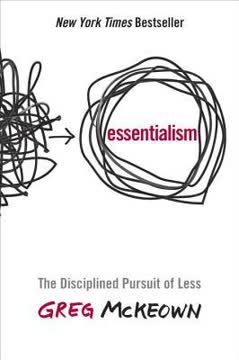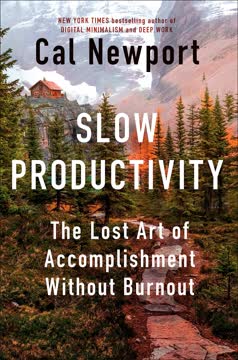つの重要なポイント
1. 気を散らす原因はテクノロジーではなく、不快感にある
時間管理は痛み管理である。
心理的な不快感が気を散らす原因となる。 私たちの脳は不快な感情や経験から逃れるために進化してきた。この進化的特性はかつては生存に不可欠だったが、現在ではしばしば気を散らす原因となる。テクノロジーは気を散らす根本原因ではなく、不快感を和らげるための便利なツールに過ぎない。
真の原因を理解することが重要である。 気を散らす原因が内面的な状態にあることを認識することで、根本的な問題に対処することができる。この視点の転換により、外部要因を責めるのではなく、自分の注意力に責任を持つことができる。不快感の要因には以下が含まれる:
- 退屈
- 否定的なバイアス
- 反芻
- 快楽順応
2. 内部トリガーを制御してコントロールを取り戻す
頭に浮かぶ感情や思考をコントロールすることはできないが、それにどう対処するかはコントロールできる。
意識が第一歩である。 内部トリガーを認識し、受け入れることで、衝動的に反応するのではなく、意図的に対応することができる。このプロセスには以下が含まれる:
- 気を散らす前の感情を特定する
- 内部トリガーを書き留める
- ネガティブな感覚を好奇心を持って探求する
トリガー、タスク、気質を再構築する。 衝動を抑えようとするのではなく(これはしばしば逆効果になる)、以下の方法で再構築する:
- トリガーを再構築する:不快感を成長の機会として捉える
- タスクを再構築する:一見単調な活動に新しさと挑戦を見つける
- 気質を再構築する:意志力と自己制御について成長マインドセットを持つ
3. 意図的なスケジューリングでトラクションを確保する
何から気を散らされているのかを知らなければ、それを気を散らすものと呼ぶことはできない。
価値観と優先順位を定義する。 トラクションとは、目標や価値観に近づく行動のことを指す。自分にとって重要なことを明確に定義することで、意思決定と時間配分の枠組みを作ることができる。
タイムボクシングを使って一日をスケジュールする。 この技法には以下が含まれる:
- 理想的な週のテンプレートを作成する
- 自分自身、関係、仕事のための時間をスケジュールする
- カレンダーの空白をなくす
- スケジュールを関係者と同期させる
時間を積極的に計画することで、行動が意図と一致し、気を散らす可能性を減らすことができる。
4. 外部トリガーをハックして中断を最小限に抑える
このトリガーは私に役立っているのか、それとも私がそれに仕えているのか?
役に立たないトリガーを特定し、排除する。 外部トリガーは、行動を促す環境の合図である。役立つものもあれば、多くは気を散らす原因となるものもある。各トリガーが目標に役立っているか、それともそれから引き離しているかを評価する。
一般的な気を散らす要因を管理するための戦略を実施する:
- メール:バッチ処理、「二度触れる」ルールを使用する
- 会議:アジェンダを要求し、デバイスフリーポリシーを実施する
- グループチャット:応答時間の期待を設定し、ステータスインジケーターを使用する
- スマートフォン:不要なアプリを削除し、通知設定を調整する
- デスクトップ:視覚的な乱雑を整理し、集中作業中にウェブサイトブロッカーを使用する
環境をコントロールすることで、持続的な注意力と生産性のためのスペースを作り出すことができる。
5. 事前のコミットメントを活用して気を散らすことを防ぐ
衝動性の解毒剤は前もって考えることである。
事前のコミットメントの力を活用する。 これは、将来の行動を制限するために事前に行う決定である。誘惑される前に気を散らす障壁を作ることで、集中力を維持する可能性が高まる。
事前のコミットメントの種類:
-
努力の契約:望ましくない行動をより困難にする
- 例:作業時間中にウェブサイトブロッカーを使用する
-
価格の契約:気を散らすことに金銭的なコストを付ける
- 例:締め切りを逃した場合に寄付を約束する
-
アイデンティティの契約:行動を自己イメージと一致させる
- 例:「気を散らさない」人として自分を定義する
これらの戦略を活用することで、集中した作業と意図的な生活へのコミットメントを強化するサポートシステムを作り出すことができる。
6. 気を散らさない職場文化を作る
気を散らすことは機能不全の兆候である。
職場の気を散らす根本原因に対処する。 常に接続されている文化は、心理的安全性の欠如、不明確な期待、またはコミュニケーションの不備など、より深い問題に起因することが多い。
集中をサポートする環境を育む:
- 仕事量と優先順位についてのオープンダイアログを奨励する
- 深い作業のための定期的な「集中時間」を実施する
- テクノロジー使用に関する健全な境界をモデル化する
- コミュニケーションと応答性に関する明確なガイドラインを作成する
根本的な文化的問題に取り組むことで、従業員の幸福と効果をサポートする、より生産的で満足度の高い職場環境を作り出すことができる。
7. 心理的ニーズに対処して気を散らさない子供を育てる
子供たちは心理的な栄養を必要とする。
子供の行動の背後にある駆動力を理解する。 自己決定理論によれば、すべての人は繁栄するために以下の三つのものを必要とする:
- 自律性:選択に対するコントロール感
- 有能感:熟達と成長の感覚
- 関連性:他者とのつながりと帰属感
デジタルな気を散らすものに代わるものを提供する:
- 子供たちに時間と活動の選択をさせる
- スキルの開発と達成の機会を作る
- 対面の社会的交流と自由な遊びを優先する
これらの基本的なニーズに対処することで、親は子供たちがテクノロジーとの健全な関係を築き、集中力を向上させるのを助けることができる。
8. 相互理解を通じて気を散らさない関係を育む
社会的な状況での気を散らすことは、私たちが重要な人々と完全に一緒にいることを妨げる。
テクノロジー使用に関する社会的規範を発展させる。 社会が公共の喫煙の問題に対処するために「社会的抗体」を発展させたように、デジタルな気を散らす問題に対処するための新しい規範を作り出すことができる。
気を散らさない関係のための戦略:
- デバイスフリーゾーンや時間を設定する(例:食事中)
- 注意を向け直すための優しいリマインダーを使用する(例:誰かが電話をチェックしたときに「大丈夫?」と尋ねる)
- 他人に見せたい行動をモデル化する
- 期待と境界についてオープンな会話を持つ
気を散らす問題に集団で取り組むことで、私たちは人生の中で重要な人々とのより強く、より意味のあるつながりを作り出すことができる。
最終更新日:
FAQ
What's "Indistractable: How to Control Your Attention and Choose Your Life" about?
- Focus on Distraction: "Indistractable" by Nir Eyal explores the concept of distraction and how it affects our ability to focus on what truly matters in our lives.
- Four-Part Model: The book introduces a four-part model to help readers become indistractable, which includes mastering internal triggers, making time for traction, hacking back external triggers, and preventing distraction with pacts.
- Practical Strategies: It provides practical strategies and techniques to manage both internal and external distractions, allowing individuals to regain control over their attention and time.
- Application Across Life Domains: The book applies these strategies across various life domains, including personal well-being, relationships, work, and parenting.
Why should I read "Indistractable"?
- Improve Productivity: The book offers insights and tools to enhance productivity by minimizing distractions and focusing on important tasks.
- Enhance Relationships: It provides guidance on how to be more present in personal relationships by reducing digital distractions.
- Empowerment: Readers learn to take control of their time and attention, leading to a more fulfilling and intentional life.
- Adaptability: The strategies are adaptable to various aspects of life, making them applicable to both personal and professional settings.
What are the key takeaways of "Indistractable"?
- Distraction is Manageable: Distraction is not inevitable; it can be managed by understanding and addressing its root causes.
- Timeboxing: Scheduling time for specific tasks helps differentiate between traction (actions that move you toward your goals) and distraction.
- Precommitments: Making precommitments can help prevent impulsive behaviors that lead to distraction.
- Psychological Needs: Understanding and fulfilling psychological needs like autonomy, competence, and relatedness can reduce the urge to seek distractions.
How does the Indistractable Model work?
- Master Internal Triggers: Identify and manage the internal triggers that lead to distraction by understanding the discomfort they cause.
- Make Time for Traction: Use timeboxing to schedule tasks and ensure that your time aligns with your values and goals.
- Hack Back External Triggers: Identify and eliminate external triggers that do not serve your goals, such as unnecessary notifications.
- Prevent Distraction with Pacts: Use effort, price, and identity pacts to commit to staying focused and avoiding distractions.
What are some practical strategies from "Indistractable"?
- Ten-Minute Rule: Delay giving in to distractions by waiting ten minutes, allowing the urge to pass.
- Effort Pacts: Increase the effort required to engage in distracting behaviors, such as using apps that block certain websites.
- Identity Pacts: Adopt an identity that aligns with being indistractable, reinforcing behaviors that support focus.
- Schedule Syncing: Regularly align your schedule with stakeholders at work to ensure time is spent on priority tasks.
How does "Indistractable" address workplace distractions?
- Psychological Safety: Creating a work environment with psychological safety encourages open discussions about distractions and solutions.
- Regular Meetings: Implement regular meetings to address and solve issues related to distraction and workload.
- Cultural Change: Encourage a culture that values focused work and respects boundaries, such as not sending emails after hours.
- Leadership Example: Leaders should model indistractable behaviors, such as scheduling uninterrupted work time.
How can parents use "Indistractable" to help their children?
- Understand Internal Triggers: Recognize the psychological needs driving children's use of technology, such as autonomy and relatedness.
- Timeboxing for Kids: Teach children to create schedules that balance online and offline activities.
- External Triggers Management: Help children manage external triggers by setting boundaries on device usage.
- Empowerment: Involve children in setting their own rules for technology use, fostering self-regulation.
What are the best quotes from "Indistractable" and what do they mean?
- "The antidote to impulsiveness is forethought." This quote emphasizes the importance of planning ahead to prevent distractions.
- "You can’t call something a distraction unless you know what it is distracting you from." It highlights the need to have clear goals and priorities to identify distractions.
- "Being indistractable means striving to do what you say you will do." This underscores the commitment to align actions with intentions and values.
- "Distraction is a problem like any other." It suggests that distraction can be managed with the right strategies and mindset.
How does "Indistractable" suggest handling digital distractions?
- Remove Unnecessary Apps: Delete apps that do not align with your values or goals.
- Rearrange Home Screen: Organize your phone to display only essential apps, reducing the temptation to check distracting ones.
- Use Technology Wisely: Employ apps and tools that help block distractions, such as website blockers or focus timers.
- Set Boundaries: Use features like Do Not Disturb to limit notifications during focused work times.
What role do psychological needs play in "Indistractable"?
- Autonomy: The need for control over one's actions and decisions; lack of autonomy can lead to seeking distractions.
- Competence: The need to feel capable and effective; when unmet, individuals may turn to distractions for a sense of achievement.
- Relatedness: The need for connection with others; social media and online interactions can fulfill this need if not met offline.
- Balance: Meeting these needs in healthy ways can reduce the reliance on distractions for psychological fulfillment.
How can "Indistractable" improve personal relationships?
- Be Present: Reduce digital distractions to be more present and engaged with loved ones.
- Scheduled Quality Time: Timebox activities with family and friends to ensure meaningful interactions.
- Model Behavior: Demonstrate indistractable behaviors to encourage similar habits in others.
- Open Communication: Discuss and agree on boundaries for device use during shared time.
How does "Indistractable" redefine productivity?
- Focus on Inputs: Concentrate on the time and effort put into tasks rather than just outcomes.
- Eliminate Pseudowork: Identify and reduce tasks that appear productive but do not contribute to goals.
- Align with Values: Ensure that daily activities reflect personal and professional values.
- Continuous Improvement: Regularly review and adjust schedules to optimize productivity and focus.
レビュー
本書『Indistractable』は賛否両論の評価を受けている。読者は、気を散らす要因を管理し、集中力を向上させるための実践的なアドバイスに対して高く評価している。特に、テクノロジーの使用や時間管理に関する内容が共感を呼び、実行可能な助言として受け入れられている。しかし、一部の批評家は、内容が繰り返しで深みがなく、過度に単純化されていると感じている。職場の生産性、人間関係、子育てに関する議論は価値があると強調されている。内容が人生を変えると感じる読者もいれば、もっと短い形式にまとめるべきだと提案する人もいる。総じて、本書は気を散らす世界で注意力を取り戻そうとする人々にとって有益なガイドと見なされている。
Similar Books















